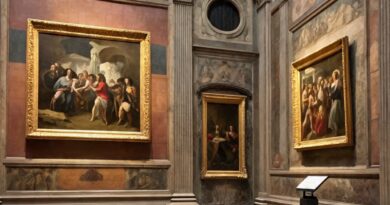The Power of Art in Modern Culture
Art has always been a mirror reflecting human emotions, values, and creativity. In today’s fast-changing world, the power of art in modern culture goes beyond beauty or decoration—it has become a driving force for awareness, connection, and transformation. From visual arts and digital design to film, music, and fashion, art shapes how we think, feel, and interact with one another. It influences our social norms, political opinions, and even personal identities. The power of art in modern culture reminds us that creativity is not a luxury; it’s a necessity that defines who we are as a global society.
The Power of Art in Modern Culture and Its Role in Expression.
Art gives people a voice when words fail. In modern culture, expression through art allows individuals to share emotions, beliefs, and experiences in unique ways. Whether it’s a painting depicting social injustice or a song that captures heartbreak, art communicates across languages and cultures. The power of art in modern culture lies in its ability to express what cannot be spoken directly—it channels the deepest human emotions into a universal language that everyone can understand.
In today’s social media-driven world, visual storytelling through platforms like Instagram, YouTube, and TikTok has become a form of art itself. Millions of creators use these spaces to share their perspectives, break stereotypes, and inspire others—all through artistic expression.
The Power of Art in Modern Culture as a Tool for Social Change.
Art has the unique ability to challenge systems and ignite change. Throughout history, artists have used their work to confront injustice and inspire movements. In modern times, street art, photography, and digital illustrations have taken activism to a global scale. The power of art in modern culture can be seen in movements such as climate awareness, gender equality, and racial justice.
For instance, murals painted in cities worldwide often highlight issues like pollution, poverty, and inequality. These artworks not only beautify spaces but also provoke thought and encourage dialogue. Art serves as both a protest and a promise—a way to push society forward while keeping hope alive.
The Power of Art in Modern Culture and Technology.
Technology has completely transformed the art world. Digital art, 3D printing, NFTs (non-fungible tokens), and AI-generated creations have opened new dimensions for artists and audiences. The power of art in modern culture now extends into virtual galleries, interactive installations, and immersive experiences where the line between creator and viewer blurs.
Modern artists collaborate with programmers, engineers, and designers to create works that merge science and creativity. This evolution proves that art is not static—it adapts with time, reflecting the spirit of innovation. Digital platforms also democratize art, allowing anyone with talent and passion to reach a global audience instantly.
The Power of Art in Modern Culture and Education.
In the educational field, the power of art in modern culture plays a vital role in shaping creative and critical thinkers. Schools that integrate art into their curriculum report higher engagement, better problem-solving skills, and emotional development among students. Art education teaches empathy, patience, and cultural appreciation—skills that go beyond the classroom.
Moreover, art helps students connect with history and heritage. Learning about ancient civilizations through their art forms allows us to understand their values and struggles. Similarly, studying contemporary art reveals how our generation responds to global issues and technological change.
The Power of Art in Modern Culture and Mental Health.
One of the most profound aspects of the power of art in modern culture is its impact on mental health and emotional well-being. Art therapy is now widely recognized as a healing practice for those dealing with anxiety, depression, or trauma. Creating or even observing art can reduce stress and provide a sense of peace.
During challenging times, such as the COVID-19 pandemic, many people turned to painting, music, and writing as outlets for expression and comfort. Art heals because it allows people to release emotions that might otherwise remain unspoken. It connects the mind and soul, bringing harmony in a chaotic world.
The Power of Art in Modern Culture and Identity.
Art helps individuals and communities preserve and celebrate their identities. Cultural art forms—whether traditional dance, calligraphy, or folk music—carry the essence of who we are. In a globalized society, where cultures constantly mix, the power of art in modern culture ensures that heritage is not lost but shared and reimagined.
Many artists today blend cultural influences in their work, creating hybrid forms that speak to a multicultural audience. This fusion highlights that while we may come from different backgrounds, art connects us all through shared humanity.
The Power of Art in Modern Culture and Economy.
Art also plays a significant role in the economy. From the film and fashion industries to digital design and advertising, creativity drives billions of dollars in global revenue. The power of art in modern culture supports countless jobs, businesses, and communities.
Art exhibitions, festivals, and online platforms not only give exposure to artists but also attract tourism and investment. Cities like Paris, New York, and Tokyo thrive as creative hubs because they recognize the economic and cultural value of the arts.
The Power of Art in Modern Culture and the Future.
Looking ahead, the power of art in modern culture will only grow stronger. As technology evolves, artists will continue to explore new mediums like virtual reality, augmented reality, and AI to express their ideas. The next generation of creators will not only entertain but also educate and unite people through art.
The future of art lies in collaboration—between humans and machines, between cultures and generations. Art will continue to be the bridge that connects emotion with innovation, tradition with progress.
Conclusion: The Endless Power of Art in Modern Culture
In conclusion, the power of art in modern culture is limitless. It shapes societies, challenges injustices, heals wounds, and builds connections across the globe. Art is not just a reflection of life—it is the energy that drives it forward. Whether through a simple painting, a viral song, or a digital masterpiece, art continues to remind us of our shared humanity. As long as creativity exists, culture will continue to evolve, inspire, and empower the world.




Pingback: Exploring the Deep Connection Between Art and Humanity –